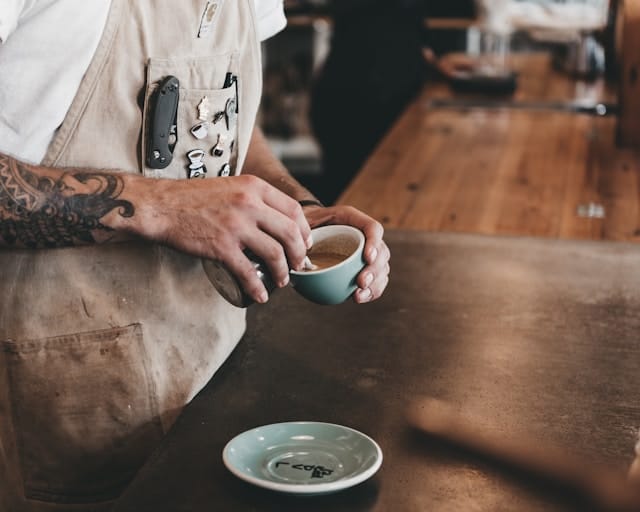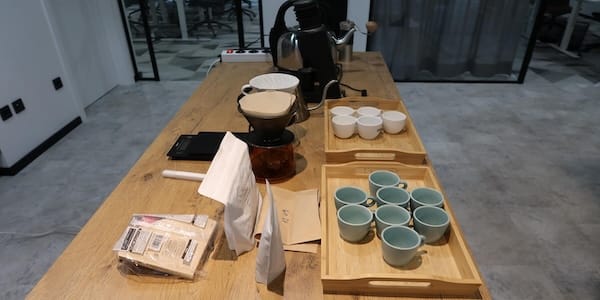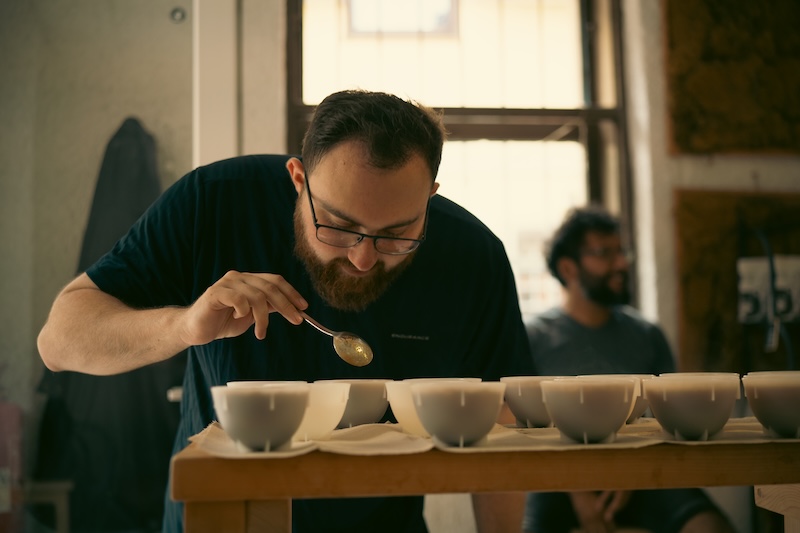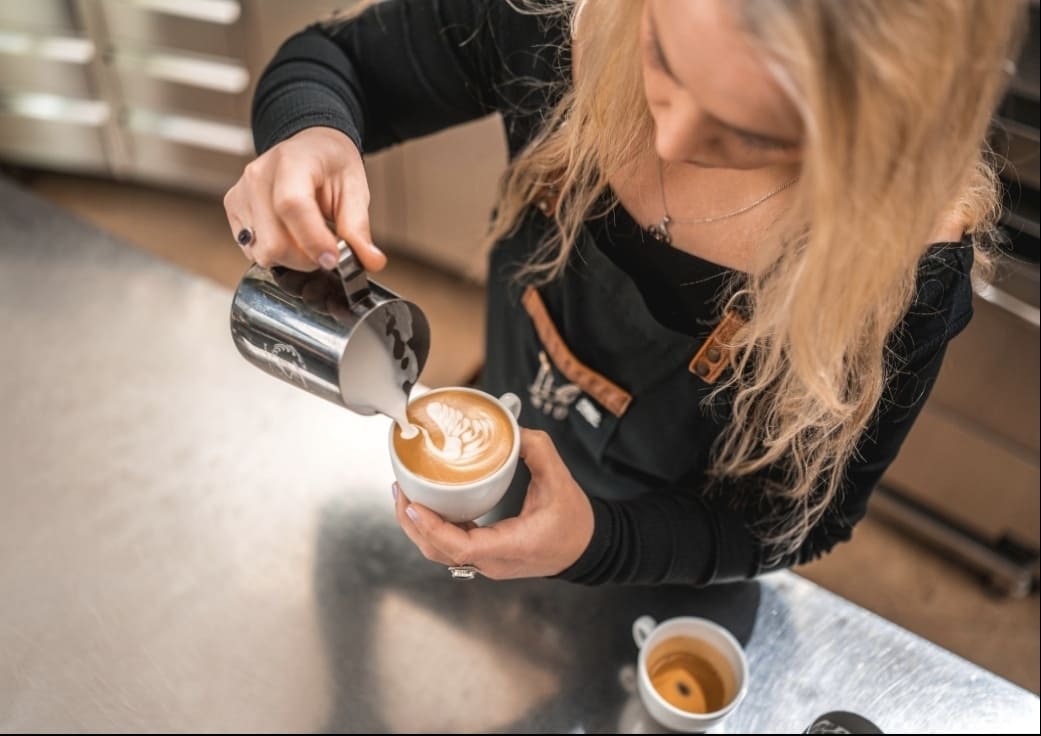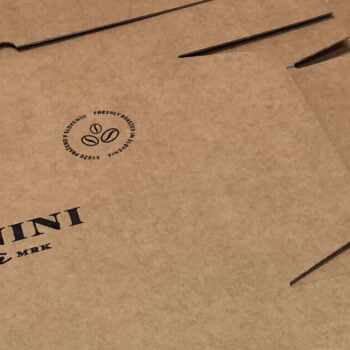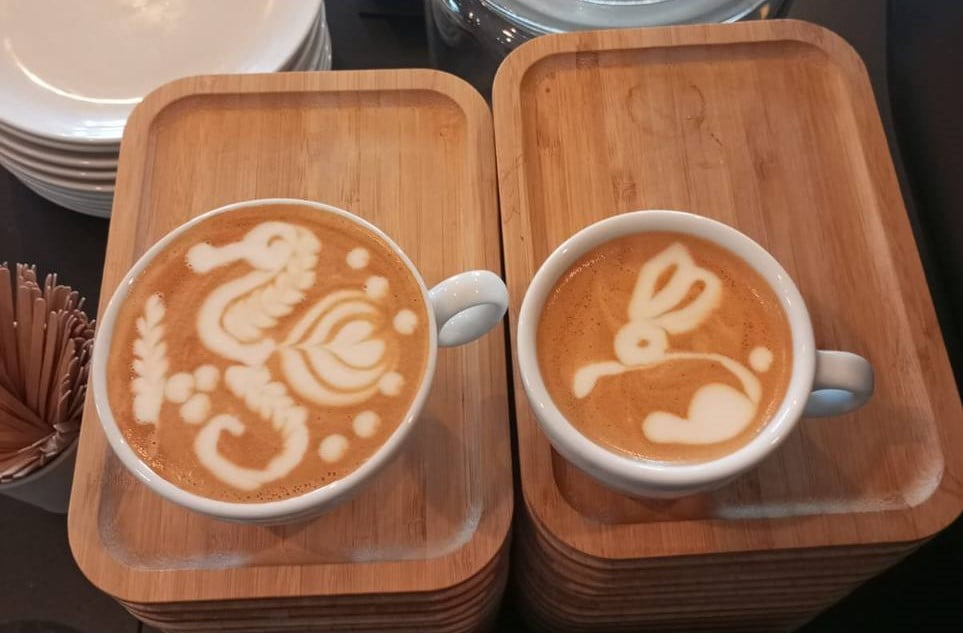ALL POSTS
ALL POSTS
Slovene Latte Artists: Ales Gorenc
10 min read
Last edit: Oct 10, 2025
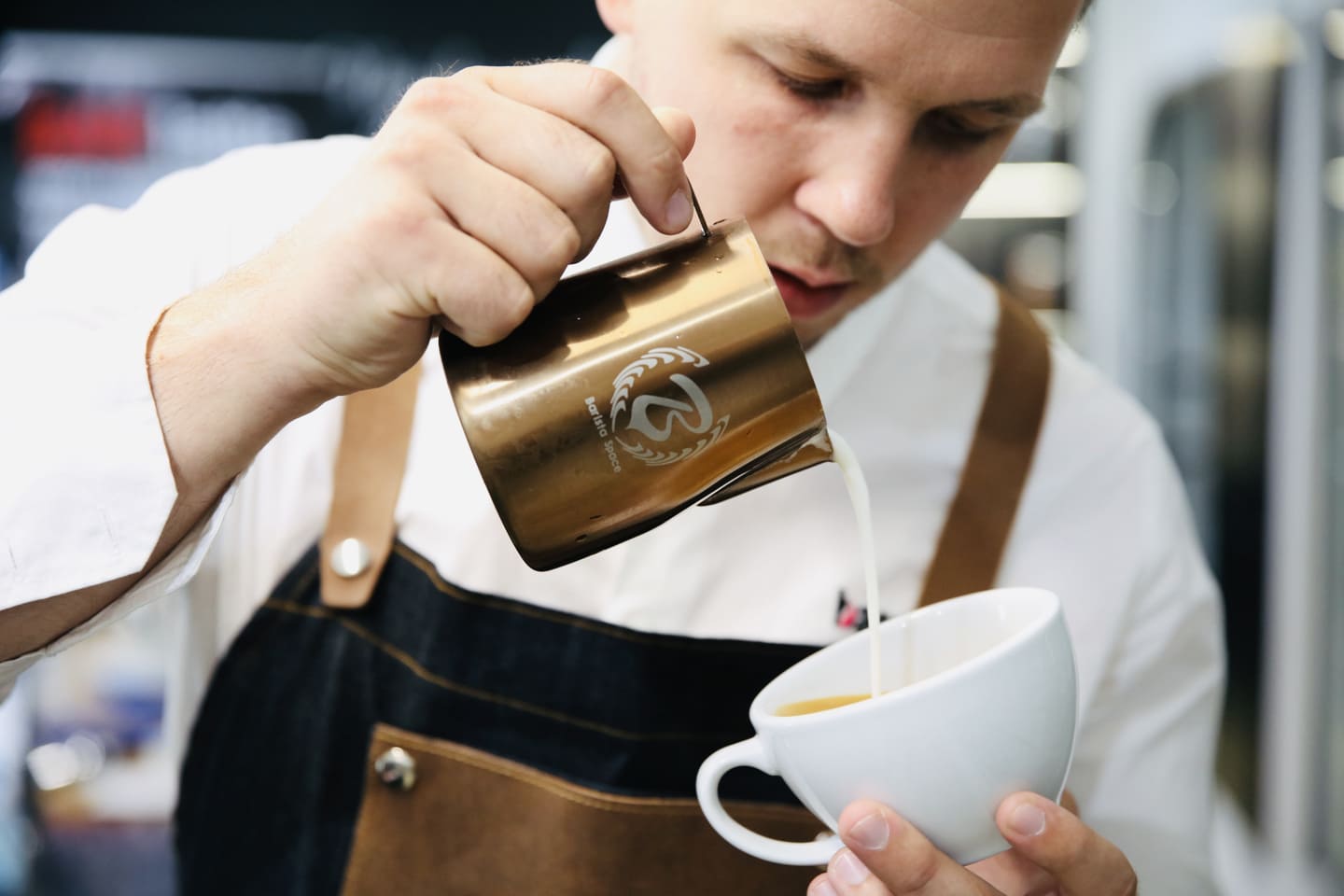
Latte art is not just about pretty patterns on your cappuccino. Latte art can be a competitive discipline, a facade for the coffee industry.
In this interview, we spoke to a brand ambassador of Barcaffe, one of the few Golden Jugs in the world, and Slovene national barista champion Ales Gorenc. This material continues our cycle of interviews with Slovene latte artists. Find the first entry in our blog.
Ales Gorens
– Hi, Ales! I know that you’re super busy so thank you for finding time to chit-chat about coffee.
– Hello, Lev! Thank you for inviting me. It’s an honor to chit-chat with you, especially about coffee.
– First of all, I’d like to ask you what happened in your life when you chose to become a barista.
– I started as a waiter when I was young. My father had a restaurant. So for me, gastronomy was like a big no-no. I wanted to do something else in my life. So I went to study economics. I was living in Bled, mostly a tourist town, and the jobs I could find were in service, bartending, and things like that. So as much as I wanted to go further away from the hospitality business, it kept pulling me back in. So eventually I said “Nah, the economy is not for me”. I switched to gastronomy and went to gastro-college. There I found some interesting people, mostly bartenders who showed me that the worlds of service and gastronomy could be very interesting, very enthusiastic. So first of all, I started bartending. I went to a European bartending school in London where I spent four months learning, working and then I came back. I was working mostly as a bartender. Creating and serving drinks was and still is my thing, being proud of the product that you did with your hands and with your mind. How about coffee and not all this mixology thing?
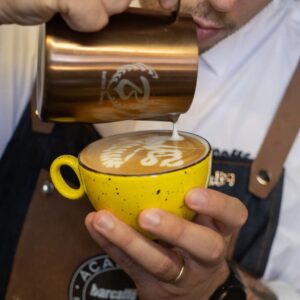
When I was studying at the College of Gastronomy, I was always competing because my thinking was and is that if you compete you learn. It’s not about the reward you’re getting, it’s about the reward of knowledge you’re getting throughout every competition. So there was one competition in coffee and nobody wanted to compete in it. That was like 13 years ago. So that was the moment. I wanted to. I went. I failed, I failed. I took the last place! But that triggered something inside me because at that point the competition was in Slovakia and I met Patrick Varga, who is a great barista and latte artist. He went to the world stage I think 5-6 years ago. And like I said, 13 years ago in Slovenia we knew only Turkish coffee. There was no specialty coffee scene yet. There were mostly only commercial brands. So when Patrick started talking to me that he had some V60 or something I didn’t know what the hell it’s he was even about? It was as if we were in a lab doing some experiments with coffee! But he took me to some specialty coffee shops in Slovakia and I was amazed. I have never tasted coffee like that in my life. I asked myself “what was I doing all this time?”. That’s mostly what triggered me to start learning. By the way, I didn’t like my first specialty coffee!
But it triggered something inside me. So when I came home, I started learning. I started searching for people around Slovenia, outside Slovenia, who could teach me something. Buying books, watching YouTube, all those things. Just learning about coffee, making mistakes, buying some beans, grinding it at home, and experimenting.
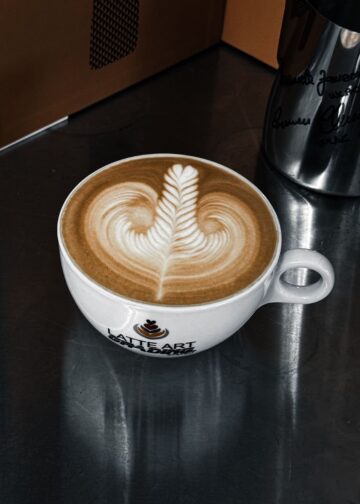
– That is a great barista origin story if you ask me! You are by far one of the best latte artists in Slovenia that I know. I believe you even have multiple titles to yourself. Care to name a few for all of them or none of them?
– So three years ago I became the Slovene national Barista Champion, which was unfortunately not an internationally official title yet, but I put all into it. We represented caffea Eugenioides and Geisha at that time and I’m proud of the performance at that time. Recently I got the Golden Jug from LAGS, which is a latte art grading system. It’s like an educational program and they also do 2 competitions, basically national and then the world stage. So I am qualified to go on the world stage and compete in the World Latte Art Championship. This is my main goal for this year, going on the world stage in latte art and also competing in Ljubljana Coffee Festival. It’s just like for me to see how my nervous system will work. I competed once in the latte art and I also failed. And basically, because my hands start to shake when I compete. When you do barista or some other competition, you can hide that a little bit. All the other competitions that I took part in weren’t that big. Some European coffee competitions are based within gastro-schools. Barcaffe organized a barista competition years ago when I became the champion. That’s it at the moment.
– That’s quite a big list if you ask me. What motivated you to focus on the latte art back then? Were you already recognizing that latte art is something that sells?
– I like creating things with my hands. So when you do something and you can look at it as your product, you feel fulfilled. That is one thing. And also what I found basically from the gastronomy school, you know when you cook and you cook like Michelin star dishes, you also have to plate them and you have to plate them nicely. It has to look nice as well. So I think the same is true about coffee. When you put coffee with milk or cappuccino to the customer, the first thing is that the drink should be pretty.
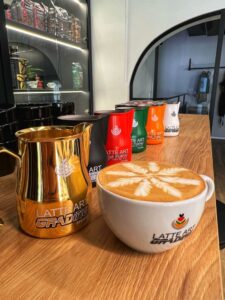
– You said that you went to the gastro-schools and courses. Would you say that going to gastro-colleges is a must-have before going to the job?
– If an employer wants you to work there will be methods to teach you in any workplace. But if you want to learn, if you want to upgrade, of course, then the school would help you.
– Then tell me this, how did you learn latte art? You said that you had a mentor and you did a lot of courses. In my experience with courses, especially about latte art, you get the foundation to build your skills. Was that true with you?
– Pretty much, yeah. You have to practice, that’s for sure. Learning latte art is like learning to ride a bicycle. Someone will show you, and you’ll understand it, but then you have to practice before you know how to do it. But most of the time I was practicing alone. And when you’re practicing alone, you’re inclined to make the same mistake. And that’s the problem. Because latte art is based on fine motorics. When your head understands the move and your hand doesn’t, then you have the problem. So it’s still better if somebody explains to you before you start making the mistakes. So that’s what I got from latte art courses.
– So what does a Golden Jug of Slovenia do now?
– I work as a brand barista representing a Barcaffe brand.
– So you move constantly around the country. Is it even possible to catch you and see your latte art and drink your coffee anywhere or do you need to book an appointment well in advance?
– It depends. I mean, Barcaffe has a training center in Ljubljana and I also spent a lot of hours there. I do work on some fairs organizing latte art shows. So yeah, look me up on coffee fairs and festivals in Slovenia.
– Let’s go back to LAGS. You said that you are certified for LAGS and you can judge these events. Tell me a bit more about it. Do the organizers invite you to judge or does the initiative come from you? Have you judged any events already?
– So first of all, you have to do some levels of latte art degrading. It’s not obligatory actually, but it helps you a lot to understand how the system works. Afterwards, you can apply for judging. You have the calibration for the judges before you get the certificate. So you do that with the headquarters and with the main judges. They teach you how to evaluate latte art for the championship. You have some practical courses. For the national championships, usually, the national judges are involved, but it depends on the country. If there are not enough judges available in some regions you might get an invite and LAGS will pay your traveling expenses.
Last year I was judging the World Latte Art Championship in Milano, which was a nice experience. The system of evaluation is constantly improving and today we have 3 judges for each level of latte art difficulty.

– Do you see any new trends, techniques, or technologies influencing Latte Art championships? Would you say that there is a noticeable impact?
– Yeah, of course. We see fully automatic machines and things like oat milk and the cup design this year were new and therefore posing new challenges.
– You also teach latte art. Is there anything that a potential student should know before coming to the course?
– It might sound funny, but the easiest thing is if you come up with no knowledge at all, so you’ll understand it quicker than others. So you can start from zero. You can come with whatever knowledge you’re having, though. But it is easier to teach someone from the ground up than re-teaching.
– You believe that espresso base is more important to focus on before getting to the latte art part. So what would be the ideal coffee to use for latte art in your opinion?
– I wouldn’t say that there is an ideal coffee for that. But for sure there are easier ways to get good contrast. As it goes for coffee, the easiest way to go is with some commodity coffee, a medium-dark roast. Don’t necessarily go for a blend with robusta. If you have too much Robusta, you have too much CO2. That also happens with just roasted coffee, the crema will be higher and the density of the crema will be higher. So that makes lathard more difficult. Having coffee with very high acidity can also pose a problem for a latte artist. If we are talking about milk just take any commercial ultra-pasteurized one. It will do the trick.
– So to sum up: commercial blend, not too dark, and commercial milk, but ultra-posterized.
– Yes, the ones that are used mostly in bars, you know.
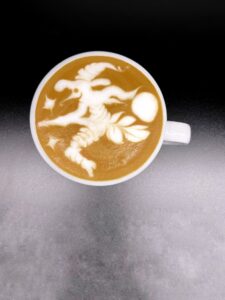
– Sounds easy enough, thank you! You travel a lot around the country. You see a lot of baristas in Slovenia, different people, of different ages, working with specialty coffee and with commercial blends, medium or dark roast. How good is the average level of latte art that you see in Slovenia? Do you think making latte art more incorporated into bars can help us find more future baristas?
– That’s a nice question. The first part of the question, more and more people are doing nice latte art, that’s for sure. Mostly the young people. But it is possible to learn it when you’re 50 or you can learn it when you’re 15. It doesn’t matter. Secondly, I believe that general coffee knowledge should come first and latte art skills second. But people indeed eat with their eyes so yeah, maybe latte art can be a hook to bring more people to the coffee industry.
– Thank you Ales for your time, story, and insights into latte art!
Outro
Latte art is a skill that is easy to learn and extremely hard to master. It takes a lot of willpower and practice. But in the end, the efforts put in are worth it!
The most coffees served globally are those with milk, after all.
Achieving a symphony of taste of specialty coffee and masterfully executed latte art patterns is one of the most joyful things one can experience in regard to coffee.
Would you like to learn more about other coffee roasters in Slovenia? Here are the guides.



